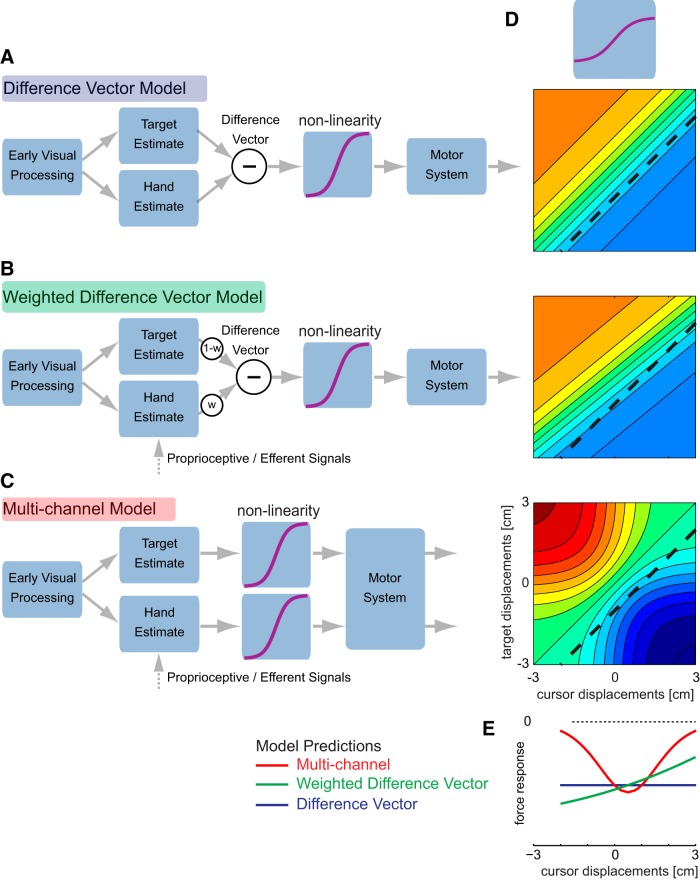Figure 2.
Models and exemplary predictions. A, The difference vector model combines estimates of target and hand positions into a single difference vector, which is sent to the motor system for corrective responses. B, The weighted difference vector allows different weightings between target and hand estimate. C, The multichannel model considers two separate feedback pathways through the visual and motor systems. The force response produced by each model depends on any nonlinearity in the motor system that can be estimated using the isolated target and cursor responses. D, The theoretical output of each of the models for a simple logistic function representing the relationship between displacement size and corrective response. The colors indicate the size and direction of the corrective forces. The black dashed line indicates the diagonal in which the difference vector is −1 cm. E, Theoretical predicted force responses for the −1 cm difference vector diagonal for the difference vector (blue), weighted difference vector (green), and multichannel (red) model.

